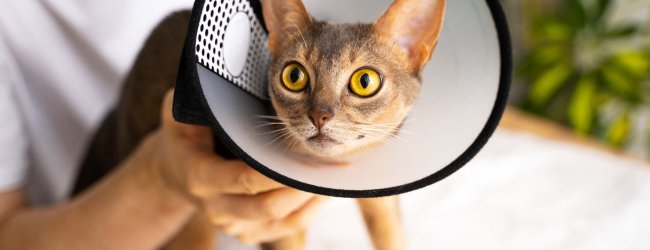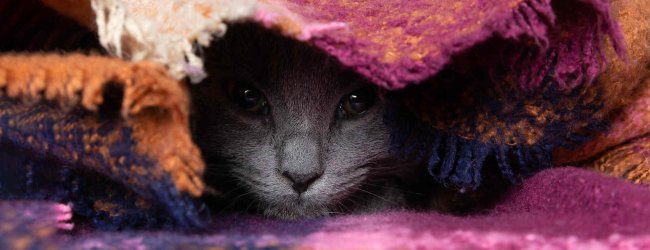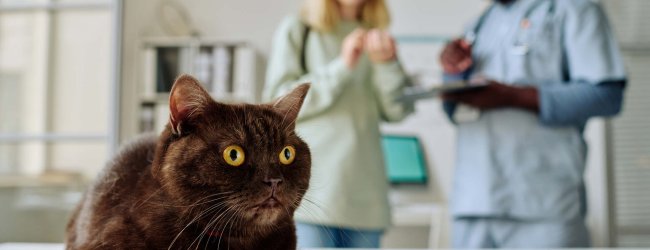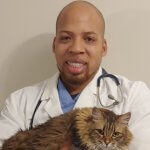 Approved by Dr. Dwight Alleyne, DVM
Approved by Dr. Dwight Alleyne, DVM Dog Drooling A Lot? What To Do (And When To Worry)
Dogs drool for a whole bunch of reasons - ranging from benign to more serious. So here's how you can get to the bottom of your buddy's slobbery troubles, once and for all.
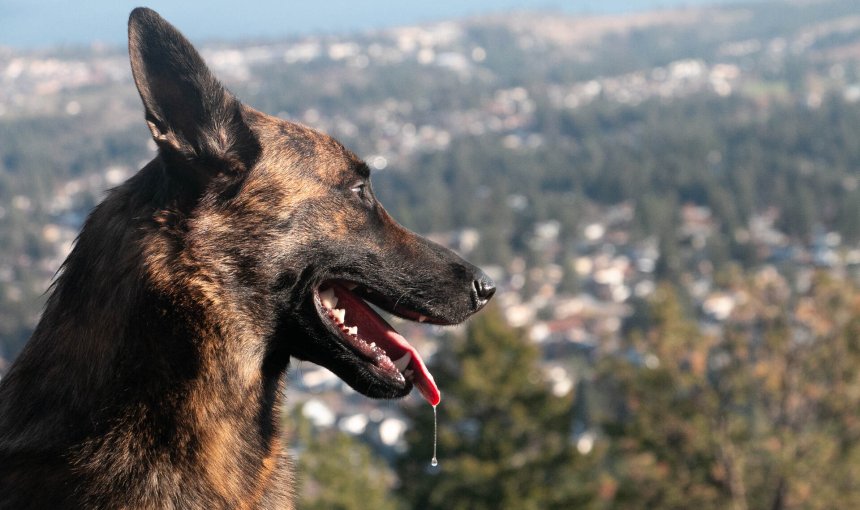
As adorable as our furry buddies are, there’s nothing quite like cuddling on a couch with them – only to find your arm or shoulder covered in slobber. (Which…well, can be pretty cute even if kinda gross!) But if you’re finding your dog drooling a lot – it might not be as benign a sign as you think.
Drooling is a pretty natural part of life for dogs – but is it a concerning sign if it’s…well, too much? What counts as excessive drooling in dogs – and is it an emergency?
If you’re constantly wiping up slobber or looking up dog bibs on Amazon, keep reading. In this post, we’re going to cover all the reasons behind why dogs drool, including when it’s normal, and when it could be a sign something’s wrong. (Plus, how a drop in your dog’s activity can signal they need a vet.) Let’s get started.

Find out how your dog spends their time.
Read moreWhy do dogs drool?
As gross as it can be to deal with, drooling actually plays a natural role in your buddy’s life. It tends to help your buddy:
- Digest food easier. Saliva keeps your dog’s mouth lubricated, which helps for chewing and swallowing food – and eventually breaking it down in their stomachs.
- Keep cool when it’s hot, especially when they pant. You might find this more often among dog breeds that overheat easier, like Pugs and Bulldogs.
- Show they’re excited – like when they’re waiting for a meal! Their bodies are just prepping for digesting the food you’re about to serve them by producing some extra saliva.
Do some dog breeds drool more than others?
Yup, and it’s got to do with how their faces are built – especially around the jowls.
Breeds with loose lips and loose skin around their mouths are just known for being droolers. Meaning “excessive” drooling might just come with the territory!
🐶 Here are a couple of natural slobberers from the dog family:
- Saint Bernards,
- Mastiffs,
- Newfoundlands,
- Bloodhounds,
- Boxers,
- Great Danes,
- and Bulldogs
All of whom tend to have “looser” jowls, which makes it difficult for them to keep the saliva in their mouths. The result? Slobber – a whole ton of it!
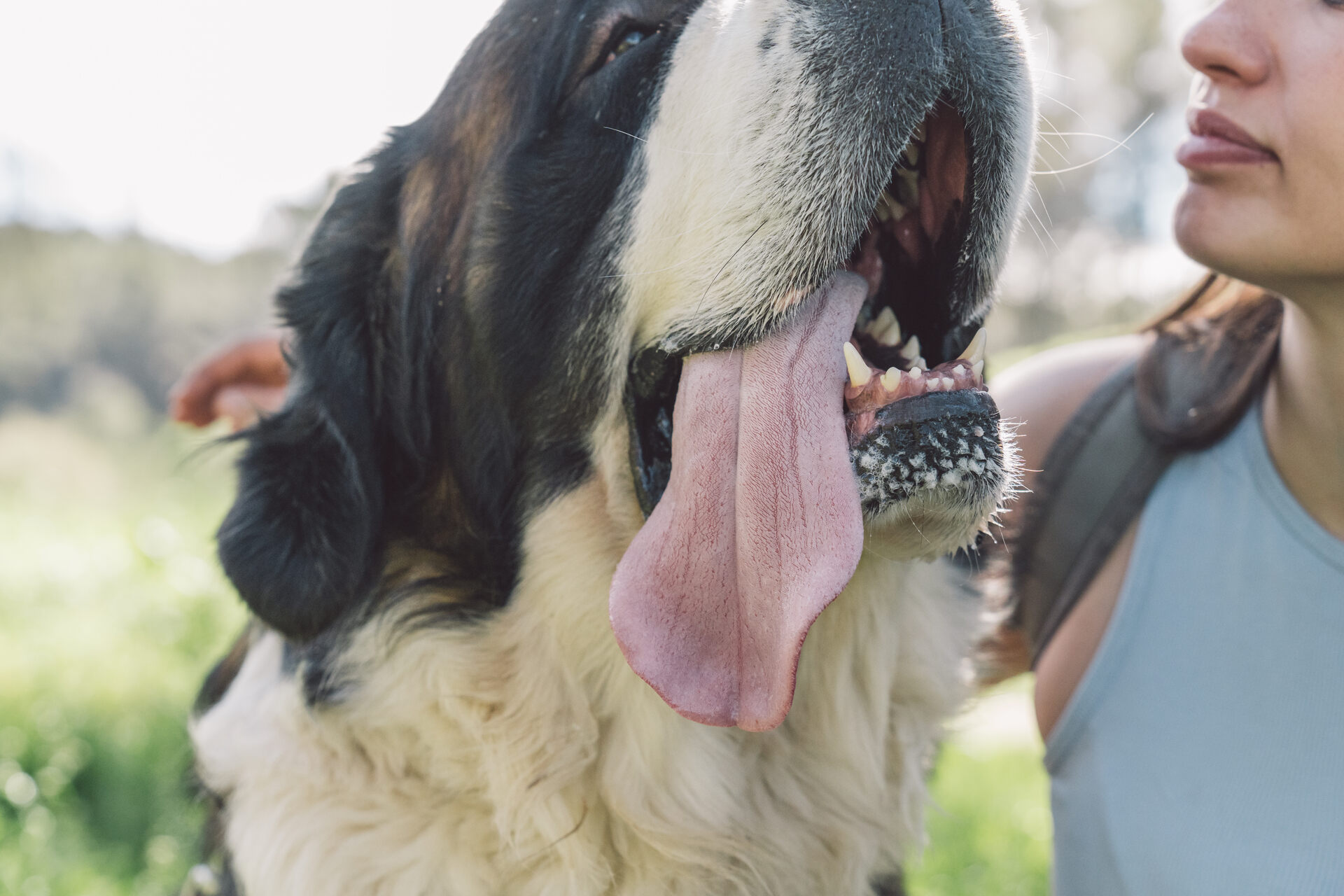
At the same time, some dogs might also drool as a result of conditions they’re born with.1
- Like, for example, a hiatal hernia – where their upper abdomen pushes in their chest. This is common among Brachycephalic dog breeds, like Pugs and Bulldogs.
- Or a portosystemic shunt, which is a condition affecting dogs’ blood vessels. This is common among Terries, Sheepdogs, Beagles, and Irish Wolfhounds.
Now while some amount of drool is 100% normal, a sudden increase in drooling can be a concerning sign. So let’s find out…
Why is my dog drooling so much? The more concerning reasons
Dealing with a drooling dog is just a part of the dog parent’s life. But if you’re worried it’s getting a bit…too much, keep an eye out for WHEN you tend to notice it the most.
Because as it turns out, excessive drooling in dogs could be triggered by:
The heat outdoors
A little bit of panting and drool after a hot day outdoors is no big deal – in fact, it’s completely normal. But if it persists and your buddy doesn’t seem to be cooling down, it could be a case of heat exhaustion – if not worse.
Dogs pant and sometimes drool as part of their natural cooling process. But if they’re letting out a seemingly never-ending stream of slobber, it could be a sign they’re overheating. (Especially if it’s hot outdoors or you’ve both come back from a run or some vigorous exercise outdoors.)
💡Offer your buddy plenty of water – and watch out for the signs of heat stroke in dogs. This condition can be fatal if left untreated and needs immediate medical attention.
Fear, stress & anxiety
Every dog reacts differently to “stress” or anxiety-inducing situations. Some might hide, others might chew up your slippers, or bark their heads off.
Still others might drool as a result of fear or anxiety – like if:
- There are “scary” noises outdoors, like an approaching thunderstorm or fireworks
- You’re taking them to the vet
- They’re somewhere unfamiliar
- There’s another, bigger, scarier dog (or animal) nearby
- You’re about to leave home for office and they’re dreading being alone all day
⚠️ Watch out for other signs of anxiety in dogs – and keep note of WHEN your dog tends to show them. This can help you better plan ahead for the situation and take steps in advance.
These could include signs like pacing, panting, whining, howling, diarrhea along with the drooling, or even destructive behavior – including escape attempts from home.
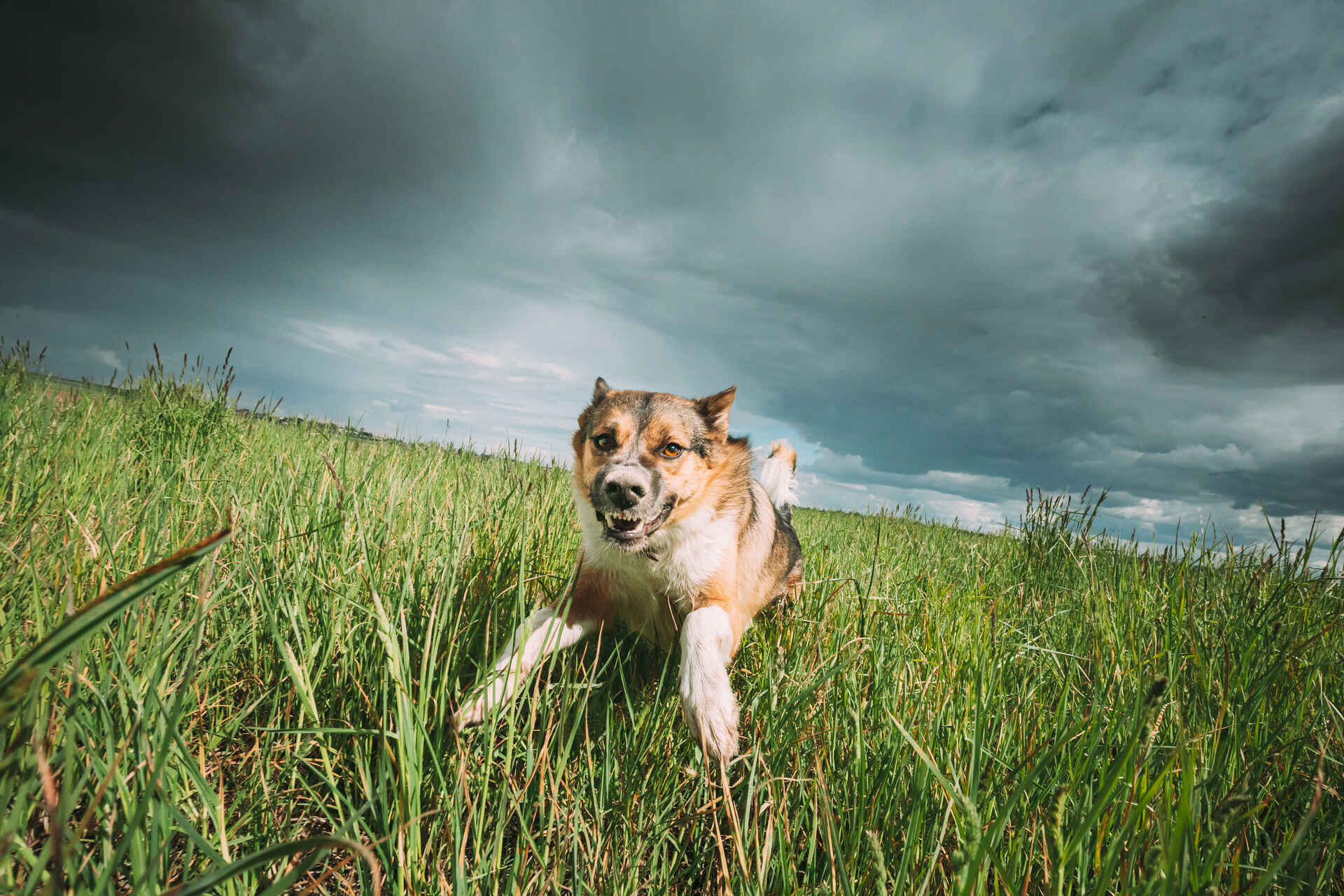
⚠️ Because sadly, fear, stress, and anxiety are all prime reasons why dogs end up running away from home.
(Yes, even your little couch potato can jump a fence or break through a window to find somewhere “safe” if they’re sufficiently spooked enough!)
In fact, more dogs go missing around the 4th of July than any other day in the year!
💡 That’s where – besides setting up a soothing indoor environment and consulting with your vet – you’re also best off planning ahead for a “lost dog” situation.
Which could look like:
- Securing your backyard and fencing,
- Installing a camera to monitor your dog’s movements,
- …or checking where your dog is with just a glance at your phone – if you’ve strapped a GPS tracker to their collar.
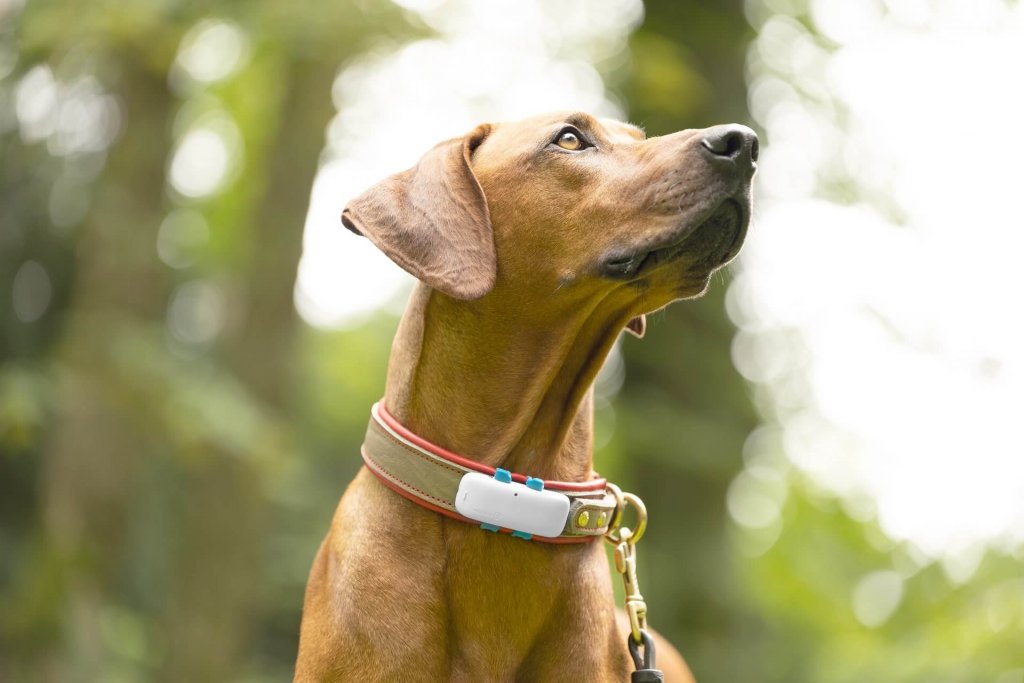
🐶 With your trusty Tractive GPS monitoring your buddy’s every move, you can now track your dog:
- In real-time,
- Over an unlimited range,
- With an escape alert the minute they leave the “safe zone” you set up around your home or backyard
All with just a glance at your phone – and a fraction of the cost of setting up a physical fence, let alone cameras.
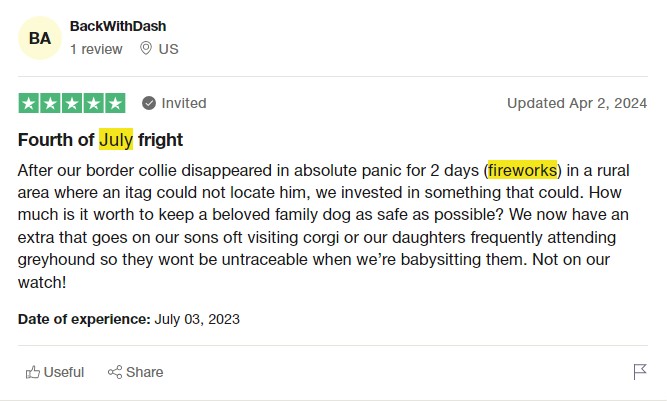
Motion sickness
If your dog tends to drool mostly around car rides – but you aren’t taking them somewhere “scary,” like the vet’s clinic – it could be due to motion sickness.
Which often comes accompanied by other symptoms like:
- Whining,
- Restlessness,
- Diarrhea,
- Vomiting,
- Poor appetite after
💡 So make sure to keep some medication around before heading off on your road trips and plenty of cleaning items to take care of any emergencies. Your vet can best advise you what specific meds might work best.
Also remember: your dog drooling might be one of the first warning signs they need to barf!
A stuck foreign object
Dogs tend to explore the world with their noses – and next, their mouths. (Especially if they’re on the younger side and haven’t learned things the hard way yet!) So you might notice them drooling excessively if they’ve got something lodged in their gums, teeth, or throat.
Which might include:
- Sticks,
- Pieces of toys,
- Rocks,
- Bones,
- And even bits of garbage!
All of which could potentially injure your poor dog’s mouth – especially if it’s a sharp object.
⚠️ In these cases, your dog’s mouth is salivating extra in an attempt to “push out” the foreign object. Watch out for signs like your buddy pawing at their mouth, gagging, or even attempting to cough it out.
If you do find something lodged or stuck in your dog’s throat and you can’t safely remove it – get your buddy to a vet right away.
Dental problems
If your dog runs into gum or tooth trouble, your dog might end up drooling as a result.
Just like us humans, dogs can land up with a whole range of dental issues. Including:
- Gum disease,
- Periodontal disease, like gingivitis or stomatitis
- Dental tumors
- Plaque and tartar buildup,
- Mouth ulcers,
- Tooth infections,
- Abscesses,
- And worse
Watch out for symptoms like bad breath, blood, pus, a reluctance around meal times, and any swelling around your buddy’s mouth. If you notice any of these, it might be time for a trip to the vet.
Read more: Dog Dental Care – How To Get Your Dog The Best Smile Ever
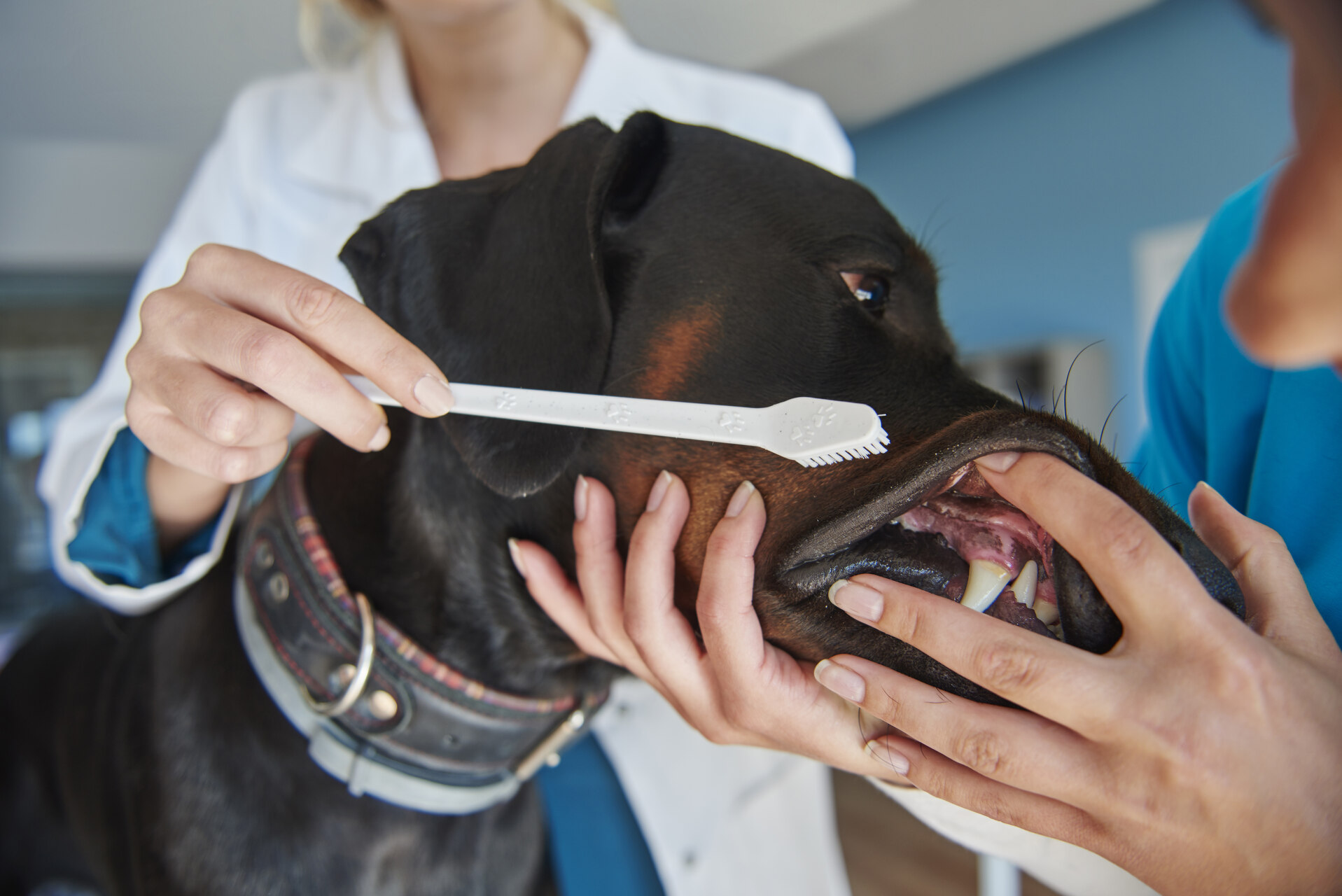
⚠️ At least one of the causes of your buddy’s dental problems could be all those extra bites, licks, and tastes they’re sneaking from your housemates, neighbors, or outside. (With or without your supervision!)
Which is why it’s a good idea to keep track of where your dog’s been wandering, especially if they’re used to spending time outdoors, left to their own devices.
One of these spots could just be somewhere they’re taking a hefty chomp of something that might make them very sick – or even poison them.
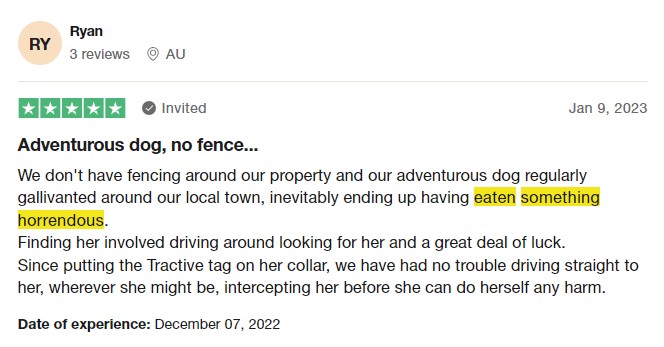
Something potentially toxic
Among the more concerning reasons behind excessive drooling in dogs is poisoning.
- If your buddy’s eaten something toxic to dogs, they might drool as a first warning sign. (Or even just licked at something poisonous – like, for example, pesticide or even a toad!)
- Likewise, if your dog’s gotten bit by a venomous animal – like a black widow spider – it might cause drooling as a symptom.
- These toxic substances could include certain plants, the harmful chemicals you might find in your gardening items, and some human foods – including chocolate, raisins, grapes, mushrooms, and onions.
⚠️ Watch out for other symptoms, like vomiting, diarrhea, shaking, and lethargy. If you suspect your buddy’s eaten something poisonous, this counts as a medical emergency. Get in touch with your vet or a poisoning hotline right away.
| Country | Animal poisoning emergency hotline |
| US | 888-426-4435 |
| UK | 01202 509000 |
| Canada | 855-764-7661 |
| Australia | 1300 869 738 |
| New Zealand | 0800 869 738 |
Another medical condition
A couple of serious medical conditions might involve your dog drooling as one of their symptoms. Including:
- Liver disease,
- Gastrointestinal disease, including gastritis, ulcerations, or even inflammatory bowel disease
- Kidney disease,
- Viral or bacterial infections,
- Congestive heart failure,
- Some kinds of cancer,
- Chemical burns, like from chewing a wire or biting into a battery – which can also cause bleeding and lesions.
- And even some neurological conditions that can make it difficult for dogs to swallow their own saliva.
If your buddy’s drooling comes accompanied with other symptoms like fatigue, weight loss, and behavioral changes – like a drop in their daily activity – drop by your vet for a checkup.
Is excessive drooling in dogs an emergency?
Not always. But there do exist situations where you’re best off acting quickly. Besides any extra drooling, watch out for these red flags:
- Labored breathing,
- A swollen face or throat,
- Vomiting or diarrhea persisting past 24 hours,
- Tremors or seizures,
- Bleeding,
- Dizziness,
- Panting,
- Pawing at the mouth,
- Pale or blue gums,
- Lethargy or unresponsiveness
- Uneven pupils,
- Restlessness,
- Loss of appetite,
- Other changes in behavior, including aggression and whining
🚩These signs could signal a dangerous medical condition, like poisoning, a severe allergic reaction, heart disease, or even heatstroke. All of which need immediate medical attention.
What to expect at your vet
Your vet will begin with a physical checkup, focusing around your dog’s mouth and neck to figure out what might be causing the drooling.
Go prepared to answer questions like:
- Your dog’s medical history, including medications and vaccinations
- Your dog’s regular eating (and drooling) habits,
- Where your dog tends to spend most of their time (including where they might be exposed to any potentially toxic substances or foreign objects they might’ve eaten)
Your vet might conduct a couple of diagnostic tests to figure out the cause of your dog’s drooling, including blood tests and X-rays. In more serious cases, they might even recommend an ultrasound or a biopsy.
What your vet might prescribe as treatment
Based on what turns out to be the cause, your vet might prescribe:
- Specific medication, including antibiotics, if the cause of your dog’s drooling is an infection.
- Pain medication, including anti-inflammatory medication to help reduce any swelling
- Dental treatment, if the cause turns out to be tooth trouble. This might include regular cleanings or even tooth removal, in serious cases.
- And in some cases, even surgery, if the cause turns out to be a tumor or a condition your dog’s been born with.
⚠️ All of which might cost you a small fortune – especially when you factor in ongoing treatment costs.
Which is where it makes sense to catch on to the signs your dog might be sick, injured, or in pain – much in advance.
How can I catch on to an illness early?
More often than not, your dog drooling might be a sign that their bodies have already kicked into “fighting” mode. Meaning, they’re already trying to handle a sickness or infection by themselves.
💡So if you catch on to it early, it can potentially save your buddy’s life – depending on what’s making them sick.
And one of the best ways you can monitor your buddy for their health? Keep an eye out for any changes in their behavior. Including:
- A drop in their activity,
- Changes in their sleeping patterns,
- or if they seem more restless or irritable than usual.
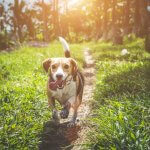
“Keep track of your dog’s energy levels, especially how long they are able to walk.
If you notice significant declines, it could be a sign of pain, heart disease, or other illness.”
– VCA Animal Hospitals2
🐶 And if you’ve invested in a Tractive device, you’re in luck.
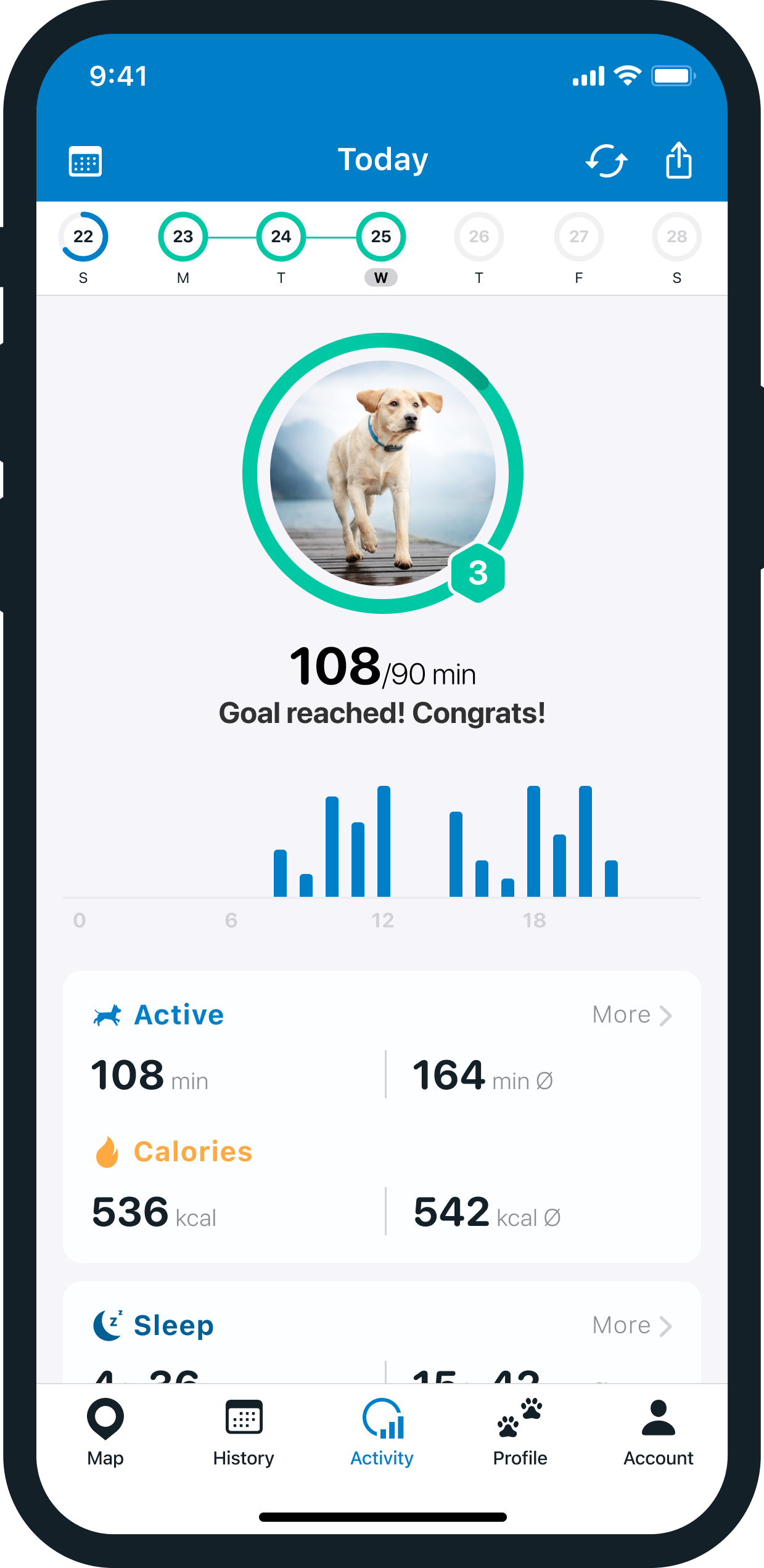
With its built-in motion detector, your trusty Tractive GPS doubles as an Activity Tracker for dogs. Logging in your buddy’s everyday movements as “active minutes.”
Which, with time, can help you figure out:
- How active your dog is on the regular – i.e., when they’re healthy,
- If there’s a weird spike or dip in your dog’s regular activity – which could signal that something’s not quite right.
- Whether your dog’s activity has dropped so much that it’s time to go to a vet – which you can pick up with a well-timed Health Alert from your Tractive device.
💡 All of which can give you actionable data to share with your vet once you drop by for a visit – and potentially save your dog’s life while at it!
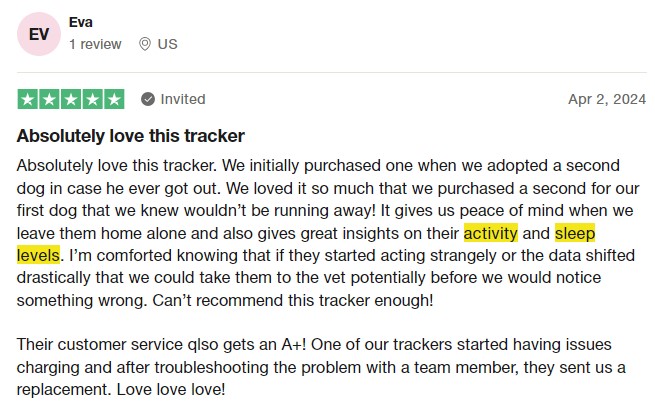
Home remedies for dog drooling
Now while you can’t stop your buddy from slobbering all over you or the couch entirely, here are a couple of ways you can manage the situation by yourself at home. (Or as your dog’s recovering.)
Keep your buddy cool & well-hydrated
Dehydration can turn up in some sneaky, easy-to-miss ways. So make sure your dog has access to:
- Plenty of cool, shaded spots to rest in throughout the day. Try using cooling mats, fans, or umbrellas in your backyard to help keep their body temperature down.
- Fresh water at all times, especially on hot days and after walks and exercise. Add some ice cubes to their water bowl to help cool them down.
Set up a calming indoor space
If your dog tends to drool due to anxiety-inducing situations, setting them up an enriched, calming indoor environment can go a long way. (Else, your vet can best advise you whether your dog could benefit from anti-anxiety medication.)
- Consider using a calming product, like a lavender spray or pheromone dispenser, to help your buddy relax.
- Anxiety vests, weighted blankets, or thundershirts can help “swaddle” your buddy and help them feel safe. (Though do be sure to get the green light from your vet first.)
- Interactive toys and food puzzles can help keep your dog occupied while you’re away.
- Calming music or white noise can help mask any “scary” sounds, like fireworks. Dogs tend to enjoy reggae and soft rock the best!
- Leave your dog behind a blanket or a sweater with your scent.
- Consider installing an indoor webcam to check up on your dog periodically. Some of these even dispense treats!
⚠️ Ideally, you aren’t leaving your dog home alone – or when it’s “scary” outdoors, like during a storm – for too long either. Adult dogs tend to do fine being left to their own devices for around 2-6 hours, but puppies need more frequent checkups. (Mostly for toilet breaks.)
So consider getting someone to check up on your dog periodically if you’re attending your 4th of July party guests or just, well, need to go to the office. (Both for the company, but also to let them outdoors for a bit to relieve themselves.)
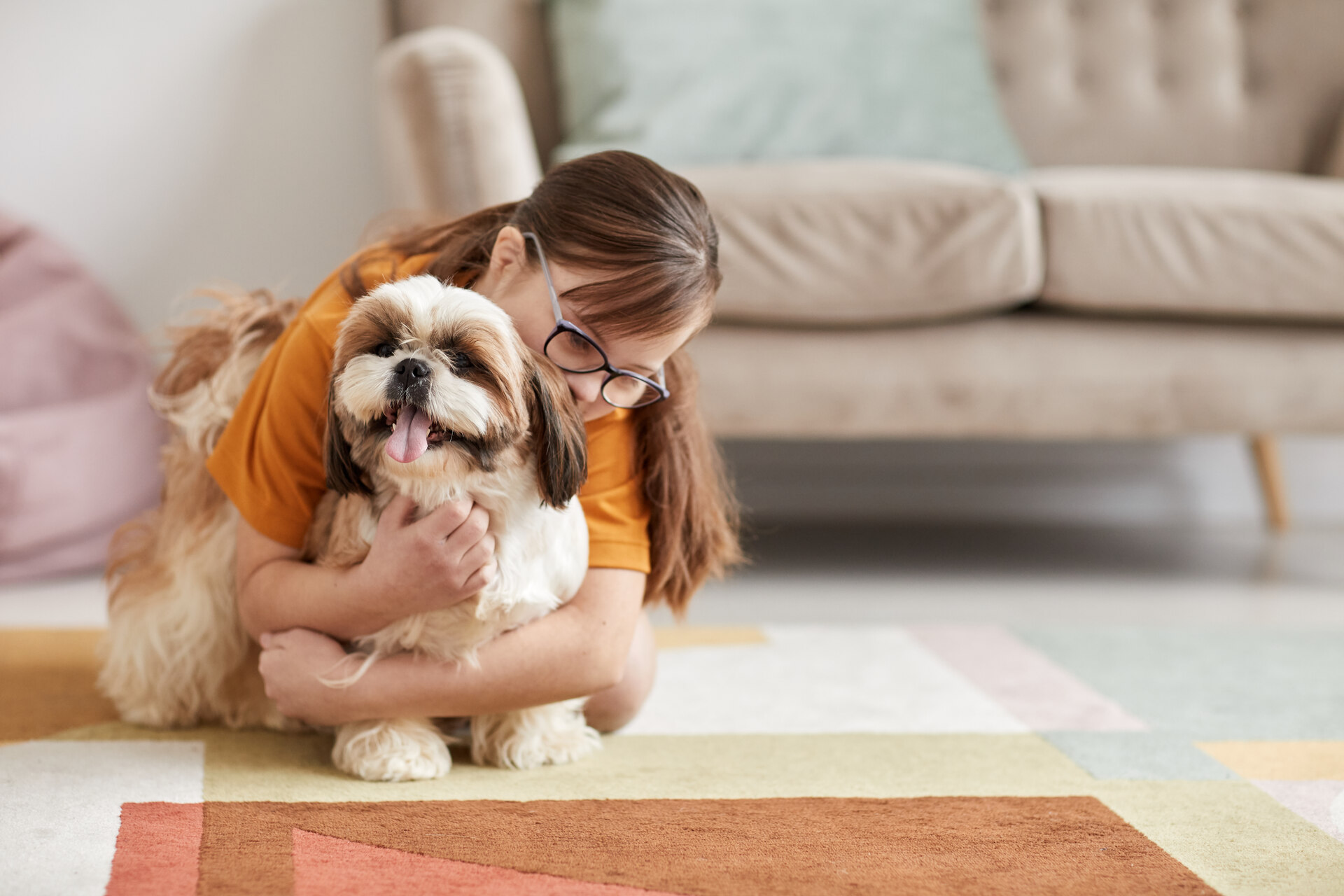
🐶 This kind of calm, safe indoor environment can help prevent your buddy from feeling anxious, slobbering all over your couch…or even sneaking outdoors for some company. (Or to find you!)
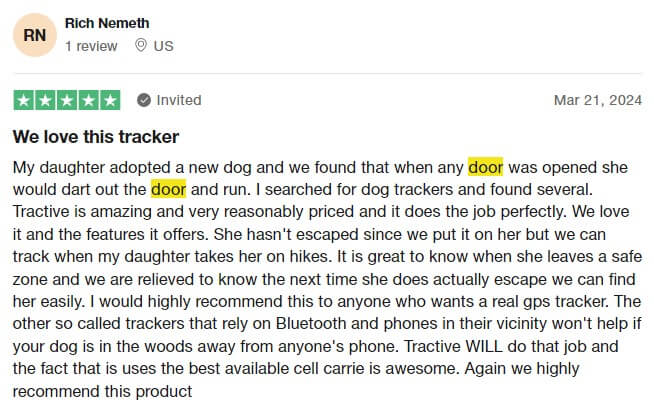
Make dental care a priority
You might be watching your dog’s meals like a hawk – but regular oral hygiene goes a long way in preventing dental problems. (And excessive drooling as a result.)
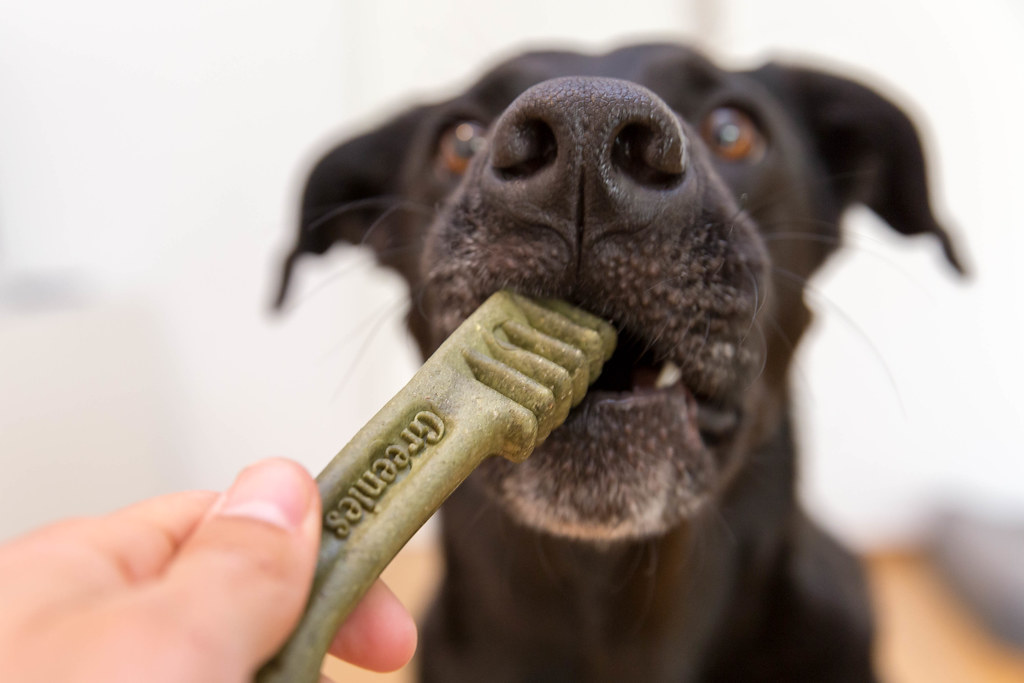
- Use a pet-safe toothpaste to gently brush your dog’s teeth after meals.
- Dental chews are a great alternative in case your buddy doesn’t take well to having their teeth brushed.
- You could also use a dental wipe to clean out your dog’s teeth, especially for hard-to-reach spots.
- If all else fails, add a dental powder to your dog’s water bowl to help them lap it up during mealtimes.
Be extra mindful of everything going into your dog’s mouth
Which includes both food and treats – but also any toys, chewable items, and solid objects – both indoors AND outdoors!
- Set some firm boundaries with friends, family, housemates, and even your neighbors when it comes to giving your dog any extra treats and snacks. (Yes, no matter how much your dog begs.) Someone or the other could potentially feed your dog something off-limits entirely by accident – leading to you both ending up in the emergency vet clinic.
- Likewise, never let your dog enter your kitchen unsupervised. Get someone to keep them distracted with a toy or a game (or some TV, if you’re living by yourself) – while you cook.
- Watch out for indoor “snack” spots – like kitchen counters and tables, pantries or cabinets, under the dining table or even trash bins…from where your dog might sneak a few extra bites. (And accidentally eat something they shouldn’t!)
- It might help to limit any food before car rides if motion sickness tends to trigger drooling (and inevitably barfing!) Though your vet could also prescribe you specific medication to combat these, if car rides tend to be the culprit.
⚠️ Importantly: watch out for any “snack” zones in your neighborhood. (Like the local hotdog stand, your neighbors’ kitchens, or even the nice family picnicking at your local park who are just so generous with the treats.)
You do want to get to the bottom of exactly where your buddy’s been eating something they really shouldn’t have!
Which is why it makes sense to…
Keep an eye on where your dog’s wandering
Which could be:
- Within your backyard, where they dig up and accidentally ingest some toxic plants or other harmful chemicals, like snail bait
- Your garage, where your dog might come in contact with all manner of pesticides, fertilizers, or even motor oil if they sniff around too much.
- Your neighborhood trash zone, where your buddy might end up licking coffee grounds, spoiled food, or something toxic to them.
- The picnic spots near you, which might include food scraps or grease left on outdoor grills (including fatty meats, bones, or grilled onions)
All of which you could keep an eye out for by watching your dog like a hawk and monitoring their every move 24/7…
Or just let your trusty Tractive device’s Heat Map & Location History gather all these spots for you.

🐶 Meaning, with just a glance at your phone, you can figure out where your dog likes to spend most of their time – without you having to hover over them every second.
And, in an emergency – like if your dog’s drooling all over the vet’s examination table – it helps you figure out where in your neighborhood your buddy could’ve run into something toxic.
So you can:
- Avoid these spots altogether,
- Warn other pet parents,
- and take a more active role in your buddy’s health and wellbeing for the future.
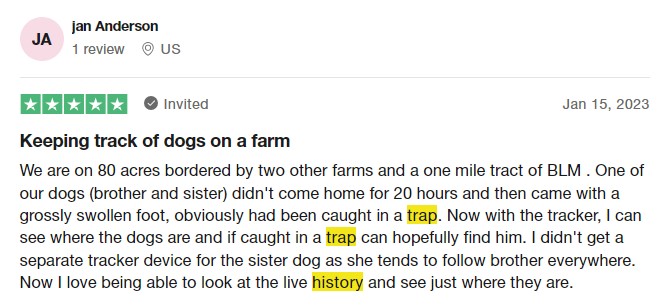
Ready to say goodbye to excessive drooling?
A drooling dog can be an adorable mess to handle – and for the most part, it really is just a part of our day-to-day as dog parents. In most cases, it could be due to completely normal reasons like cooling down from the heat, looking forward to a meal, or just plain excitement!
(Plus, some dogs just drool naturally more than others – mostly due to how their faces and bodies are built.)
💡 The key takeaway from this post: it’s important you know WHEN your dog tends to drool more often than normal.
Because when this shifts from normal to excessive, it could be a sign that something’s wrong – especially if you notice other, more concerning signs. But in most cases, it’s nothing that a little attention, care, and support from your vet can’t solve.
Why is my dog drooling so much?
| Excessive drooling in dogs could be triggered by: | How can I address it? |
Overheating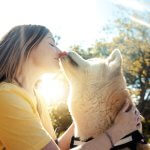 | Provide your dog plenty of cool water and shade – and get them to a vet right away if you suspect heat stroke. |
Fear, stress, or anxiety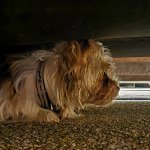 | – Set up a calming indoor environment with a ton of toys and treat dispensers – Calming products can help your dog relax, like lavender sprays, anxiety vests, or just a sweater with your scent. – In more serious cases, your vet can best advise you if anti-anxiety medication is the best option for your dog. |
Motion sickness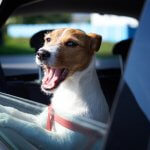 | – Limit food before car rides – Your vet could prescribe you an anti-nausea medicine |
A stuck foreign object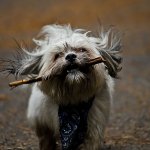 | Watch out for signs like coughing, gagging, and pawing at the mouth – and get your dog to a vet. |
Dental problems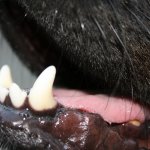 | Make regular dental care a priority, with products like dog-friendly toothpastes and brushes – or dental powders you can add to their water bowl. Else, watch out for signs like bad breath, blood, pus, and a reluctance to eat and head to your vet. |
Eating something potentially toxic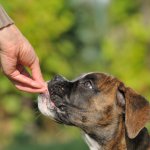 | Watch out for any vomiting, diarrhea, lethargy, or other concerning signs – and drop by your vet right away. |
Other, serious medical conditions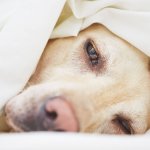 |
Given all the medical reasons your dog might be drooling extra, you’re always better off:
- Catching on to the warning signs early,
- …and doing a little detective work to figure out WHERE your dog is running into any harmful or toxic substances.
💡 Both of which have never been easier to do – if you’ve invested in a Tractive device.
With its real-time GPS tracking, your trusty Tractive device helps you keep tabs on where your dog is spending most of their time – with just a glance at your phone.
Helping you figure out if they’re venturing into any parts of your neighborhood where someone might feed them something off-limits…or somewhere your dog might take a bite, lick, or taste of something potentially toxic.
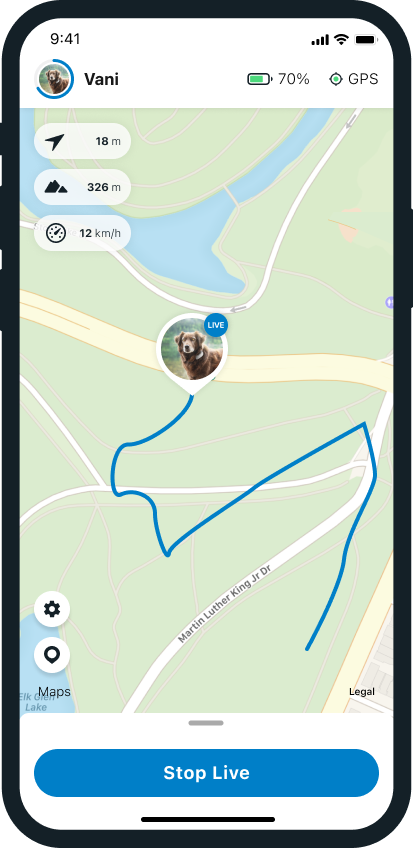
And with regular Activity Tracking, your Tractive GPS logs your dog’s movements throughout the day as active minutes – and helps you pick up quicker and easier on a drop in your buddy’s activity.

⚠️ Which might signal:
- Lethargy,
- Weakness,
- Sickness,
- Or even pain
So you can catch on to an illness much in advance – and get your buddy to a vet before their health worsens.
🐶 All this in one device – built with love for dogs and for your peace of mind as a dog parent.
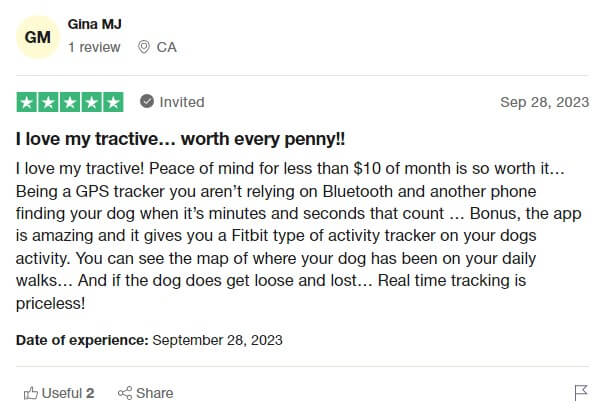
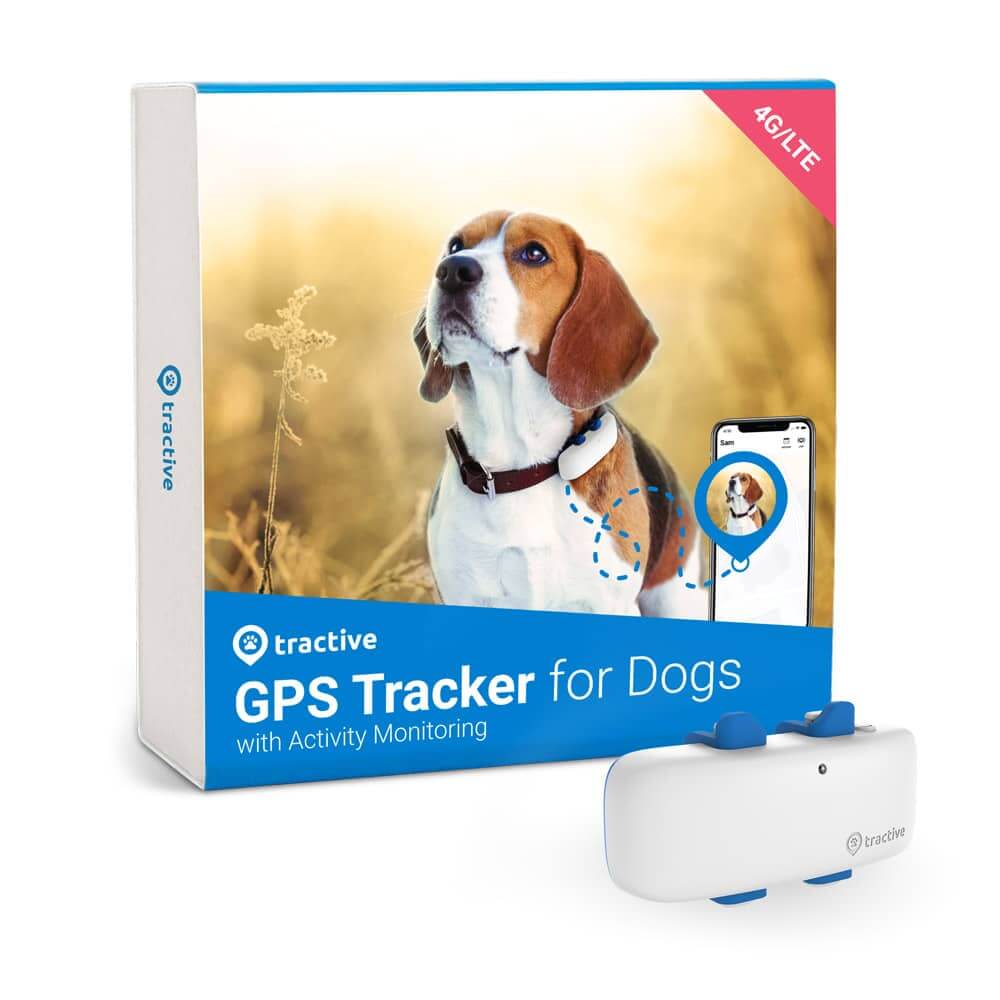
Stay on top of your dog’s wellness
Follow every step in real-time with unlimited range. Get alerts if they wander too far. Keep them happy & healthy with Wellness Monitoring. And let others – like walkers or sitters – keep an eye on your dog too.
Here’s a short, helpful video from the Veterinary Network covering the main causes of excessive drooling in dogs:
And if you’ve liked this post, share it with a friend or a loved one – and let’s help build a safer, kinder world for our furry friends together.
Your furry friend’s health and wellbeing means as much as to us as it does to you. So we’ve made it a priority to only share medically-relevant content on our blog.
This post was checked, double-checked, and medically verified by Georgia-based vet, Dr. Dwight Alleyne.

Originally from Long Island, New York, Dr. Alleyne began his career at a no-kill animal shelter before becoming a licensed veterinary technician. He graduated from Cornell University Veterinary College in 2006 and completed an internship at Purdue University.
Now practicing in Georgia, Dr. Alleyne specializes in soft tissue surgery and ultrasounds. He also writes pet health articles on his website, “The Animal Doctor Blog” (www.anmldrblog.com).
